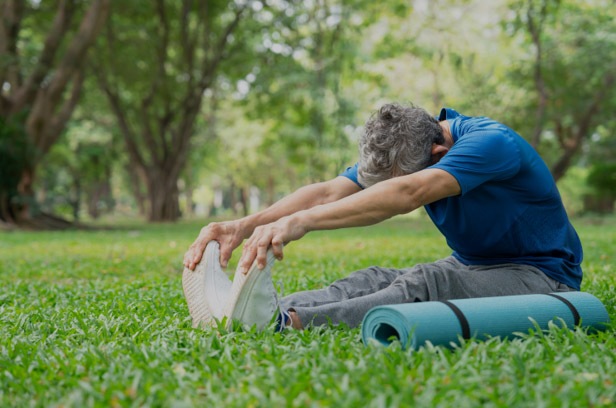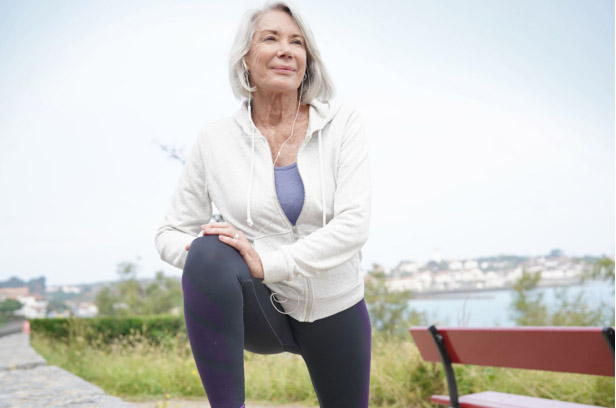As we age, our bodies naturally undergo changes that can limit flexibility and mobility. For many older adults, stiffness, joint pain, and muscle tightness become common concerns, often impacting daily activities and overall quality of life. However, one simple and effective practice—regular stretching—can make a significant difference in maintaining and even improving mobility and flexibility. John Telesca of Port Chester explores how stretching routines benefit older adults, focusing on enhancing flexibility, reducing stiffness, and promoting overall mobility.
The Importance of Flexibility and Mobility in Aging
Flexibility refers to the ability of your muscles and joints to move through their full range of motion, while mobility refers to how easily and efficiently your body can move. Both are crucial for performing everyday activities such as walking, bending, reaching, and climbing stairs. John Telesca of NY understands that as people age, these abilities often diminish due to factors like muscle atrophy, joint degeneration, and sedentary lifestyles. Without sufficient mobility and flexibility, tasks like tying shoelaces, getting in and out of chairs, or picking up objects from the floor can become difficult or even painful. A key factor in maintaining flexibility and mobility is the regular use of stretching exercises. John Telesca explains that stretching not only keeps muscles supple but also helps joints stay healthy by promoting circulation and reducing stiffness.

The Benefits of Stretching for Older Adults
- Improved Flexibility: One of the primary benefits of stretching is that it helps maintain and improve flexibility. As muscles tighten and shorten with age, the ability to move freely can become restricted. Regular stretching helps lengthen muscles and tendons, allowing for a greater range of motion. This increased flexibility can make day-to-day movements easier and less taxing, improving overall physical performance. For example, stretching the hamstrings and hip flexors can enhance the ability to walk with a longer stride and reduce the likelihood of falls. Improved flexibility in the shoulders and upper back can also aid in reaching and lifting, which are essential movements in daily life.
- Reduction in Stiffness and Pain: Many seniors experience joint stiffness, especially in the morning or after prolonged periods of inactivity. Stretching helps to alleviate this stiffness by warming up the muscles and increasing blood flow to the affected areas. This, in turn, can reduce discomfort and make movement smoother. John Telesca understands that stretching also releases tension in muscles, which can help alleviate chronic pain conditions like arthritis. For example, gentle stretches targeting the lower back, hips, and knees can improve joint flexibility, reducing the strain on these areas and offering relief from pain.
- Enhanced Balance and Posture: Good balance is essential for reducing the risk of falls, a major concern for older adults. Stretching contributes to better balance by improving the flexibility and strength of muscles, particularly in the core and lower body. Stretching exercises such as leg raises, seated twists, and calf stretches can improve both balance and posture, which are critical for maintaining independence and preventing injuries. Furthermore, better posture helps alleviate back and neck pain, which often results from long periods of sitting or slouching. Stretching exercises that focus on the spine and shoulders can significantly improve posture, helping seniors stand taller and move more confidently.
- Increased Circulation: Regular stretching can help increase blood flow to muscles and joints, which is crucial for overall mobility. Improved circulation ensures that oxygen and nutrients are efficiently delivered to tissues, aiding in muscle recovery and reducing inflammation. For seniors, better circulation also means enhanced healing from minor injuries and reduced recovery time from physical activity. Stretching after exercise or long walks, for instance, can prevent soreness and stiffness from setting in.
- Stress Relief and Mental Health Benefits: While the physical benefits of stretching are well-known, its impact on mental health is equally important. Stretching helps to reduce tension, stress, and anxiety by relaxing the muscles and promoting mindfulness. Incorporating stretching into a daily routine can lead to improvements in mood and overall well-being, which are important aspects of a healthy, active lifestyle for seniors. In fact, some forms of stretching, such as yoga and tai chi, combine mindfulness with physical movement, offering a holistic approach to well-being. John Telesca understands that these practices not only improve flexibility and strength but also encourage mental clarity and relaxation, making them particularly beneficial for older adults dealing with the stressors of aging.

How to Start a Safe Stretching Routine
It’s essential for seniors to approach stretching with care, particularly if they have existing health conditions or mobility issues. John Telesca shares some tips for safely incorporating stretching into a daily routine:
- Start Slowly: For those new to stretching, it’s important to start with gentle stretches and gradually increase the intensity. Overstretching can lead to injuries, so it’s best to ease into the routine and listen to the body’s signals.
- Focus on Major Muscle Groups: Seniors should focus on stretches that target the muscles used most in daily activities, such as the legs, hips, back, shoulders, and arms. A well-rounded routine that covers all these areas will promote overall flexibility and mobility.
- Hold Stretches for 20-30 Seconds: For maximum effectiveness, stretches should be held for at least 20-30 seconds, allowing the muscles to relax and lengthen. Breathing deeply while holding each stretch can enhance relaxation and improve results.
- Stretch Regularly: Consistency is key when it comes to stretching. To see significant improvements in flexibility and mobility, older adults should aim to stretch at least three to four times a week.
- Consult a Professional: If there are concerns about specific health conditions or physical limitations, it’s always a good idea to consult with a healthcare provider or physical therapist. They can provide guidance on which stretches are safe and effective for individual needs.
Stretching is a simple yet powerful tool that can enhance flexibility, reduce stiffness, and improve mobility in older adults. With regular practice, stretching can alleviate pain, improve balance, and promote overall well-being, helping seniors maintain their independence and enjoy a better quality of life. John Telesca emphasizes that by incorporating stretching into a daily routine, older adults can continue to move freely and comfortably, making the golden years truly active and fulfilling.

